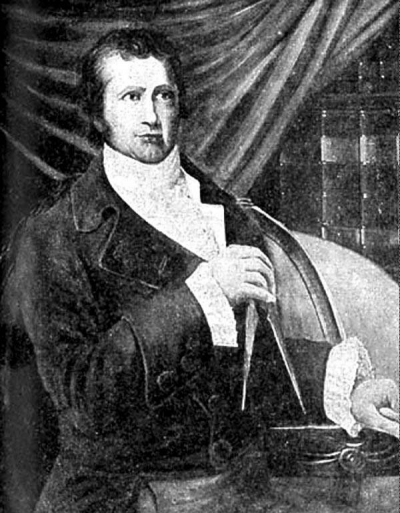The Saskatchewan River (Cree: kisiskciwani-spiy, "swift flowing river") is a major river in Canada, about 550 kilometres (340 mi) long, flowing roughly eastward across Saskatchewan and Manitoba to empty into Lake Winnipeg. Through its tributaries the North Saskatchewan and South Saskatchewan, its watershed encompasses much of the prairie regions of central Canada, stretching westward to the Rocky Mountains in Alberta and north-western Montana in the United States. It reaches 1,939 kilometres (1,205 mi) to its farthest headwaters on the Bow River, a tributary of the South Saskatchewan in Alberta.
David Thompson (30 April 1770 – 10 February 1857) was a British-Canadian fur trader, surveyor, and cartographer, known to some native peoples as Koo-Koo-Sint or "the Stargazer". Over Thompson's career, he traveled 90,000 kilometres (56,000 mi) across North America, mapping 4.9 million square kilometres (1.9 million square miles) of North America along the way. For this historic feat, Thompson has been described as the "greatest practical land geographer that the world has produced".: xxxii

1800Jun, 7
David Thompson reaches the mouth of the Saskatchewan River in Manitoba.
Choose Another Date
Events on 1800
- 14May
Washington, D.C.
The process of the U.S. Government moving the United States capital city from Philadelphia to Washington, D.C. begins. - 14Jun
Battle of Marengo
The French Army of First Consul Napoleon Bonaparte defeats the Austrians at the Battle of Marengo in Northern Italy and re-conquers Italy. - 30Aug
Slave rebellion
Gabriel Prosser postpones a planned slave rebellion in Richmond, Virginia, but is arrested before he can make it happen. - 7Oct
Robert Surcouf
French corsair Robert Surcouf, commander of the 18-gun ship La Confiance, captures the British 38-gun Kent inspiring the traditional French song Le Trente-et-un du mois d'août. - 17Nov
6th United States Congress
The United States Congress holds its first session in Washington, D.C.

 English
English  español
español  français
français  português
português  русский
русский  العربية
العربية  简体中文
简体中文 